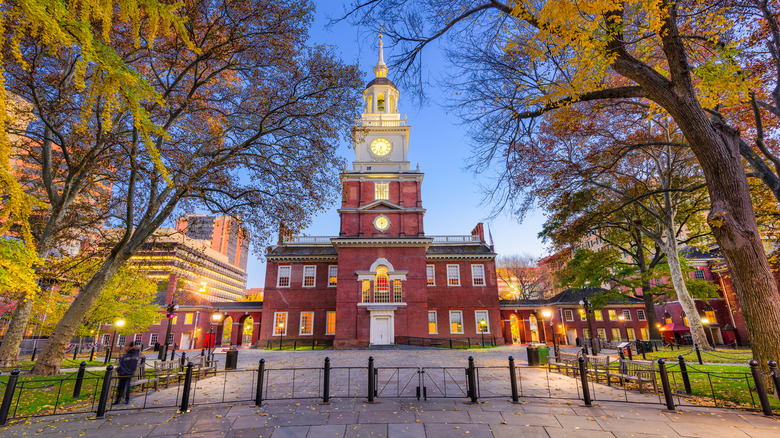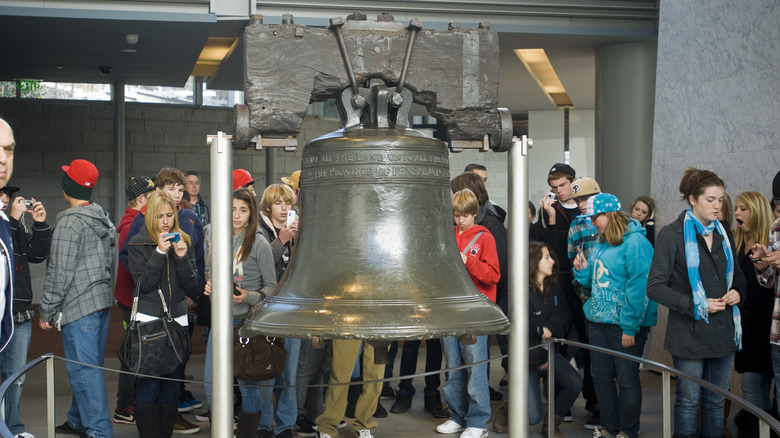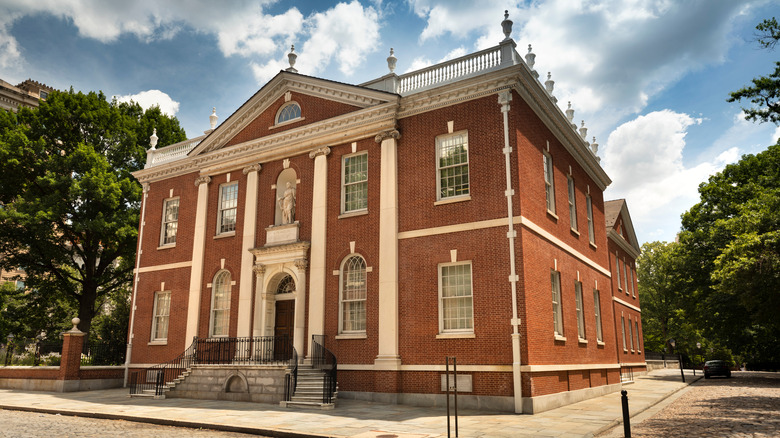Learn More About US History With A Visit To This Underrated National Park
Whether you're looking for a fascinating yet educational place to take the kids, somewhere to brush up on your history facts, or just something to do while in Philadelphia, Pennsylvania, consider stopping by the Independence National Historical Park. This park features 19 attractions, each one showcasing a significant purpose in American history. For example, the park features the first bank in the U.S. and the home of the first two presidents.
The city, which was the first U.S. capital and the first U.S. city to become a World Heritage City, undoubtedly played a pivotal role in early American history. You can see artifacts from the time, as well as learn about the city's and country's history in an engaging way. Take a tour or wander around on your own time — whatever you decide to do, you're almost guaranteed to learn something new. If you're a history buff, this is one of the best cities for you to visit.
Attractions to visit at the Independence National Historical Park
One of the most popular attractions in Philadelphia is located in the Independence National Historical Park: the Liberty Bell. The bell was initially created to honor William Penn's Charter of Privileges. It later became known as the "Liberty Bell" when abolitionists started using it as a symbol of freedom as they decried slavery. To see the bell, you simply show up and go through security. It's free, and no tickets or advance reservations are required.
The next widely popular location in the historic park is Independence Hall. This building houses the room where the founding fathers signed the Declaration of Independence in 1776 and the U.S. Constitution in 1787. To see it along with the rest of the building, you have to sign up for a guided tour. It costs $1 per person and only lasts about 20 minutes, but it's packed with fascinating information. (Plus, what history buff wouldn't want to stand where such significant U.S. documents were signed?)
After you've seen the Liberty Bell and walked around Independence Hall, you can head over to the Franklin Court Printing Office. The printing press played an essential role in generating the documents that kept the country informed. During the time, those publications and pamphlets raised morale, fostered a sense of unity, and kept people up to date on the happenings of the American Revolution, according to Print, the Press, and the American Revolution. You can see the re-created model of the printing press and learn more about its pivotal role. No tickets are required to visit here.
General information to note when visiting the Independence National Historical Park
The President's House Site is a unique historic site that shows the layout of the first two presidents' residences. According to the National Park Service, the original structure was torn down, but "the foundations still remain," and the exhibit was built upon that. Note that it's an outdoor exhibit, so dress according to the weather.
Most places are free to visit and allow for self-guided tours; a small handful require guided tours (Independence Hall, Congress Hall [March through December], Dolley Todd House, Bishop White House, and Germantown White House). Be sure to check out each site's hours before you visit since the park's locations vary. For those needing a wheelchair, head to the Independence Visitor Center to borrow one. Strollers are allowed in all buildings besides the Todd and White Houses.
There are also several events for kids and teens at the park, like Junior Ranger programs and summer camps. It's truly a place for the whole family to learn and have fun! We've only touched on a few of the many historical sites to visit at this park; over a dozen other sites are still waiting for you to explore. Pick and choose according to your interest, or if you're feeling ambitious, visit them all.


